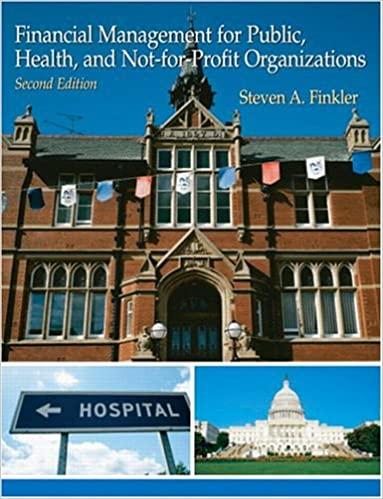Question
Connected Systems Analysis A connected system implies sequential stages with or without buffers between the stages. Examples of such systems are any operating system that
Connected Systems Analysis
A connected system implies sequential stages with or without buffers between the stages. Examples of such systems are any operating system that has more than one sequential stage as part of the operations. So, a fast food drive thru with two windows, the first one for order taking and payment, and the second one for picking up the order is an example. There are many other examples from hospitals to banks to restaurants where such systems exist. In the manufacturing scenario, the assembly line configuration for a cars production is the classic and most traditional example of such a system. The sequential stages in such an assembly line usually has no buffers between the stages as the semi-finished car moves on a conveyor belt from one stage to the next. Use a similar analogy to analyze the following case.
A system has three sequential stages (A, B and C) with no buffers in between the stages. The system processes products of three different sizes with the capacities expressed in lbs/hour. The details for the three stages are shown below.
| Stages | Processing Capacity | Setups and Other Information |
| A | 20000 lbs/hour | Setup of 20 mins if changing to a different size |
| B | 20,000 lbs/hour | Has to be shut down for maintenance for 30 minutes after every 90 minutes of operation |
| C | 18,000 lbs/hour | No setups |
The system operates for 8 hours per day, 6 days per week and for 36 weeks in the year. Assume that the system is in steady state with a continuous demand for the products.
PART A
Assume the product is set up for one size only. Based on the above information, answer the following questions:
- How many lbs. of the product can be processed in a 8- hour shift?
- Assume Stage A has been setup for the type of product to be processed in a shift. How much idle time is there in this stage during such a shift?
- If you would add capacity to any of the above stages to increase output, which stage will you add capacity to? And by how much? Why?
- Assume that cost of adding storage is $30/lb. while the cost of reducing setup time by 50% is $20,000 for Stage B and $10,000 for Stage A. What action would you recommend to maximize output from this system? How much capacity would this add and at what cost?
PART B
Now consider that the product has three sizes Large, Medium and Small (L, M, S). Note that a setup is required for changing the size on Stage A only. Determine the batch sequence for the three sizes that will be processed through the week. In determining this sequence, assume the following
- There will be an equal number of batches produced for each size in the 6-day week. This means that the entire weeks output would be equally split across the three sizes.
- Within a single day, you would need to produce at least one batch of each size.
- You could have more than one batch of each size produced within a single day.
Note that your solution for the batch sequence could have multiple possibilities/solutions which will be dependent on the number of setups that you plan to have within a day. Show all the possible solutions you can come up with.
PART C
Assume that there is an additional stage beyond the three stages discussed above where the final packaging of the product takes place, customized to specific orders. In this stage, specific customer order configurations are created and hence it takes time to not only process an order but also to setup if the order being processed changes. For simplicity, assume a 40-minute setup time irrespective of the order. The company has four customers X, Y, Z and W whose orders per week must be satisfied in their entirety i.e. the specified number of orders per week for each of these customers must be completely fulfilled if the company decides to meet the customers demand. There is an additional generic customer G whose order can have a variable number i.e. there is no fixed number of orders for this customer that must be satisfied per week.
The details are as follows
| Customers | # Orders/Week | Quantity (Lbs) Per Order | Contribution ($/Lb) |
| X | 24 | 8,000 | 0.030 |
| Y | 18 | 16,000 | 0.028 |
| Z | 15 | 24,000 | 0.026 |
| W | 10 | 18,000 | 0.024 |
| G | - | 24,000 or less | 0.020 |
Which set of contracts would you suggest the company adopt? (Analyze from the perspective of the Theory of Constraints and The Goal).
Step by Step Solution
There are 3 Steps involved in it
Step: 1

Get Instant Access to Expert-Tailored Solutions
See step-by-step solutions with expert insights and AI powered tools for academic success
Step: 2

Step: 3

Ace Your Homework with AI
Get the answers you need in no time with our AI-driven, step-by-step assistance
Get Started


